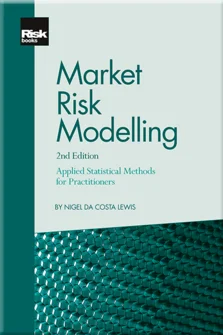The Essentials of Hypothesis Testing for Risk Managers
Preface
Risk Modelling and its Myths
Mastering the R Statistical Package
Key Concepts on Probability
Tools for Describing Risk Factors and Portfolios
The Essentials of Hypothesis Testing for Risk Managers
Alternative Methods to Measure Correlation
A Primer On Maximum Likelihood Estimation
Regression in a Nutshell
Fitting Probability Distributions to Data
Practical Principal Components Analysis
Three Essential Models for Volatility
Random Numbers and Applied Simulation
Tail Risk Modelling
Conclusion to 'Market Risk Modelling (2nd edition)'
Hypothesis testing has perhaps found its greatest use in medical science. New treatments for cancer, heart disease and diabetes are frequently subject to randomised trials where medical efficacy is assessed partly through statistical tests. Risk managers are also increasingly conducting formal statistical tests when building their models. In this chapter, we will introduce a straightforward approach to hypothesis testing. We begin by outlining the role of the normal distribution, before discussing the central limit theorem. This is followed by a step-by-step procedure for conducting a hypothesis test. We illustrate many of the ideas surrounding hypothesis testing with code samples written in R.
At the historical heart of hypothesis test procedures lies normal distribution, discovered by the Huguenot refugee, Abraham de Moivre, in 1733. However, it was Carl Friedrich Gauss, in his Theoria Motus Corporum of 1809, who derived it. In his honour, mathematicians and physicists refer to it as Gaussian distribution, and considerable importance was placed on it by early statisticians. In 1899, Francis Galton called it the “law of frequency of error”:
I know scarcely anything so apt to
Copyright Infopro Digital Limited. All rights reserved.
As outlined in our terms and conditions, https://www.infopro-digital.com/terms-and-conditions/subscriptions/ (point 2.4), printing is limited to a single copy.
If you would like to purchase additional rights please email info@risk.net
Copyright Infopro Digital Limited. All rights reserved.
You may share this content using our article tools. As outlined in our terms and conditions, https://www.infopro-digital.com/terms-and-conditions/subscriptions/ (clause 2.4), an Authorised User may only make one copy of the materials for their own personal use. You must also comply with the restrictions in clause 2.5.
If you would like to purchase additional rights please email info@risk.net











